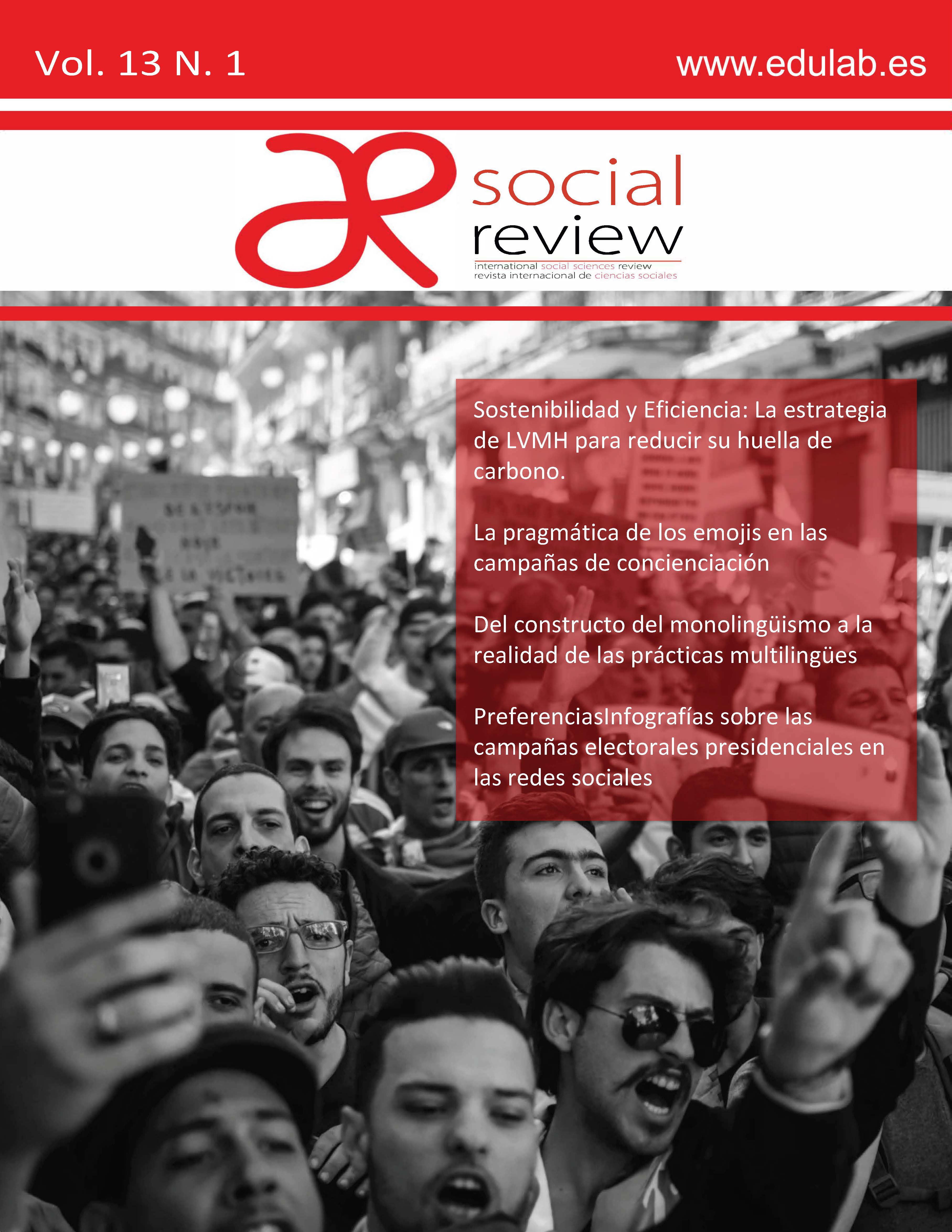Racism against Chinese Immigrants in Mexico and its Intercultural Interpretation in the Film Sonora(2018)
DOI:
https://doi.org/10.62701/revsocial.v13.5456Keywords:
dAbstract
This article examines racism against Chinese immigrants in Mexico, focusing on the film Sonora (2018), which portrays events from the early 20th century. Despite the long-standing Chinese presence since the 19th century and a population exceeding 1.2 million by 2020, Chinese representation in Mexican migratory cinema remains limited. This study considers the growth of migration-themed cinema in Mexico, encouraged by initiatives like the Global Migration Film Festival. Sonora is analyzed through political, economic, and intercultural lenses, exploring how it portrays exclusion and xenophobia under the “Yellow Peril” narrative—a concept framing East and Southeast Asians as threats. The film highlights the massacres and expulsions of Chinese communities in 1930s Mexico, often ignored in broader historical narratives. By interpreting this cinematic work, the study underscores the role of film in confronting historic discrimination and promoting intercultural understanding.
Downloads
Global Statistics ℹ️
|
271
Views
|
166
Downloads
|
|
437
Total
|
|
References
Albor Guzmán, S., Aguilar Camacho, M., y Lozano Montero, E. (2020). El laicismo y la libertad de enseñanza en el Congreso Constituyente de 1916-1917: Una contribución para la comprensión del Estado moderno como garante de la laicidad y la libertad religiosa. Acta universitaria, 24, 1-24,. http://doi.org/10.15174.au.2019.2061 DOI: https://doi.org/10.15174/au.2019.2061
Argyle, M. (1988). Intercultural Communication. En L. A. Samovar, y R. E. Porter (eds.), Intercultural Communication: A Reader 5th Edición (pp.31-44). Wadsworth Publishing Co.
Barba Casillas, J. (2019). La construcción del derecho a la educación en México. Perfiles educativos, 41(166). https://doi.org/10.22201/iisue.24486167e.2019.166.58948 DOI: https://doi.org/10.22201/iisue.24486167e.2019.166.58948
Bardan, A.(2013). The New European Cinema of Precarity: A Transnational Perspective. En Mazierska, E. Work in Cinema: Labor and The Human Condition (pp.69-90). Palgrave Macmillan. DOI: https://doi.org/10.1057/9781137370860_4
Benshoff, H. (2009). Film and television analysis: an introduction to methods, theories, and
approaches. Routledge.
Bethell, L. (1990). Historia de América Latina, 13. México y el Caribe desde 1930. Cambridge University Press.
Casseti, F., y Di Chio, F. (1991). Cómo analizar un fim. Paidós.
Cardiel Marín, R. (1997). La Migración China en el Norte de Baja California, 1877–1949. En M. Ota Mishima, Destino México un Estudio de las Migraciones Internacionales a México, Siglos XIX y XX (pp.173-188). El Colegio de México. DOI: https://doi.org/10.2307/j.ctvhn0dmp.9
Chao Romero, Roberto. 2011. Chinese immigrant to the United States via Mexico and Cuba, 1882-1916. En Elaine Carey y Andrae Marak (eds.), Historical perspectives on contraband and vice in North America’s borderlands (pp.13-23). University of Arizona Press. DOI: https://doi.org/10.2307/j.ctv1prsrwn.5
Cineteca Nacional-México. (s.f.). Springall del Villar, Alejandro. https://lc.cx/sOeX0i
Collier, M. (2005a). Context, privilege, and contingent cultural identifications in South Africangroup interview discourses. Western Journal of Communication, 69(4), 295-318. https://doi.org/10.1080/10570310500305141 DOI: https://doi.org/10.1080/10570310500305141
Collier, M. (2005b). Theorizing cultural identifications: Critical updates and continuing evolution. En W.B. Gudykunst (eds.), Theorizing about intercultural communication (pp.235-256). SAGE Publications, Inc.
Collier, M., y Thomas, M. (1998). Researching cultural identity: Reconciling interpretive and post-colonialperspectives. En D.V. Tanno y A. Gonzales (series eds.). International and Intercultural Communication Annual, Vol. 21, Communication and identity across cultures (pp.122-147). SAGE Publications, Inc.
Delgado, G. (2013). Making the Chinese Mexican: Global Migration, Localism, and Exclusion in the U.S.-Mexico Borderlands. Stanford University Press. DOI: https://doi.org/10.2307/j.ctvqsf1x2
Springall, A. (2018). Sonora (2018). [película]. Filmaffinity.
Francesco, C., y Di Chio, F. (1991). Cómo analizar un film. Ediciones Paidós.
Gao, G., y Ting-Toomry, S. (1998). Communicating Effectively with the Chinese (pp.16-17). SAGE Publications. DOI: https://doi.org/10.4135/9781452220659
García Castaño, F. J., Olmos Alcaraz, A., Martínez Chicón, R., y Rubio Gómez, M. (2023). A modo de presentación: La representación de las migraciones en el cine en España. En A. Olmos Alcaraz, R. Martínez Chicón, M. Rubio Gómez, y F. J. García Castaño (eds.), Cine y migraciones (pp.13–43). Bellaterra.
Higbee, W., y Lim, S. H. (2010). Concepts of transnational cinema: Towards a critical transnationalism in film studies. Transnational Cinemas, 1(1), 7–22. https://doi.org/10.1386/trac.1.1.7/1 DOI: https://doi.org/10.1386/trac.1.1.7/1
Hu, W. (1999). Intercultural Commnunication Series (en chino:《跨文化交际概论》). Foreign Language Teaching And Research Press.
Kluckhohn, C., y Leighton, D. (1946). The Navaho. Harvard University Press.
Lee, P.-W. (2007). Bridging cultures: Understanding the construction of relational identity inintercultural friendship. Journal of Intercultural Communication Research, (35),3-22. https://doi.org/10.1080/17475740600739156 DOI: https://doi.org/10.1080/17475740600739156
Lewis, J. (2013). Essential Cinema: An Introduction to Film Analysis. Cengage Learning.
Linda, Y. W. (1982). Inscrutability Revisited. En J. J. Gumperz, Language and Social Identity (pp.72-84). Cambridge University Press. DOI: https://doi.org/10.1017/CBO9780511620836.006
López Jiménez, J., Aceves Villalvazo, S., y León Manríquez, J. (2012). Dos aniversarios, múltiples desafíos. Las relaciones de México con China y Corea del Sur. Méx.cuenca pac, 1(2), 9-20. https://doi.org/10.32870/mycp.v1i2.389 DOI: https://doi.org/10.32870/mycp.v1i2.389
Marzal Felici, J., y Gómez Tarín, F. J. (eds.). (2007). Metodologías de análisis del film
( I Congreso Internacional de Análisis Fílmico (Madrid, 2005). Edipo.
Odijie, Michael (2018). The Fear of «Yellow Peril» and the Emergence of European Federalist Movement. The International History Review, 40(2), 358-375. https://doi.org/10.1080/07075332.2017.1329751. DOI: https://doi.org/10.1080/07075332.2017.1329751
Porter, R. E., Roy, C. S., Samovar, L. A., y McDaniel, E. R. (1982). Intercultural Communication : A Reader. Cengage Learning.
Presidencia de la República. (17 de mayo de 2021). Versión estenográfica. Petición de perdón por agravios a la comunidad china. Mensaje del presidente Andrés Manuel López Obrador. https://lc.cx/sFYsT9
Prosser, M. (1978). The Cultural Dialogue: An Introduction to Intercultural Communication. Houghton Mifflin.
Samovar, L. A., Porter, R. E., McDaniel, E. R., y Roy, C. S. (2016). Communication Between Cultures (9a edición). Cengage Learning.
Sapir, E. (1929). The Status of Linguistics as a Science. Language, 5(4), 207-214. https://doi.org/10.1525/9780520311893-004 DOI: https://doi.org/10.2307/409588
Shih, S.-M. (2007). Visuality and Identity. chinophone Articulations across the Pacifi. University of California Press. DOI: https://doi.org/10.1525/california/9780520224513.001.0001
SinEmbargo Al Aire. (2019). Sonora, la cinta de Alejandro Springall que muestra la xenofobia contra los chinos en México. [vídeo]. YouTube. https://lc.cx/OveDw4
Statista Research Department. (25 de octubre de 2023). Número de migrantes en México en 2020, por género y país de origen. [Dataset]. https://lc.cx/jTh2pO
Wildfeuer, J., y Bateman, J. A. (2016). Film Text Analysis: New Perspectives on the Analysis of DOI: https://doi.org/10.4324/9781315692746
Filmic Meaning. Taylor y Francis.
Womack, J. (2007). La Economía de México durante la Revolución 1910-1920: Historiografía y análisis. Argumentos Estudios críticos De La Sociedad, 1, 9–42. https://argumentos.xoc.uam.mx/index.php/argumentos/article/view/244
Zhu, K., Li, N., y Gao, Y. (2020). Palabras sin palabras: una comparación no verbal entre chinos y hispanohablantes desde una perspectiva intercultural (en chino: 《无言之言——跨文化视域下中国和西班牙语族群的非语言对比》). University of International Business and Economics Press.
Downloads
Published
How to Cite
Issue
Section
License
Copyright (c) 2025 Authors retain copyright and transfer to the journal the right of first publication and publishing rights

This work is licensed under a Creative Commons Attribution-NoDerivatives 4.0 International License.
Those authors who publish in this journal accept the following terms:
-
Authors retain copyright.
-
Authors transfer to the journal the right of first publication. The journal also owns the publishing rights.
-
All published contents are governed by an Attribution-NoDerivatives 4.0 International License.
Access the informative version and legal text of the license. By virtue of this, third parties are allowed to use what is published as long as they mention the authorship of the work and the first publication in this journal. If you transform the material, you may not distribute the modified work. -
Authors may make other independent and additional contractual arrangements for non-exclusive distribution of the version of the article published in this journal (e.g., inclusion in an institutional repository or publication in a book) as long as they clearly indicate that the work was first published in this journal.
- Authors are allowed and recommended to publish their work on the Internet (for example on institutional and personal websites), following the publication of, and referencing the journal, as this could lead to constructive exchanges and a more extensive and quick circulation of published works (see The Effect of Open Access).













